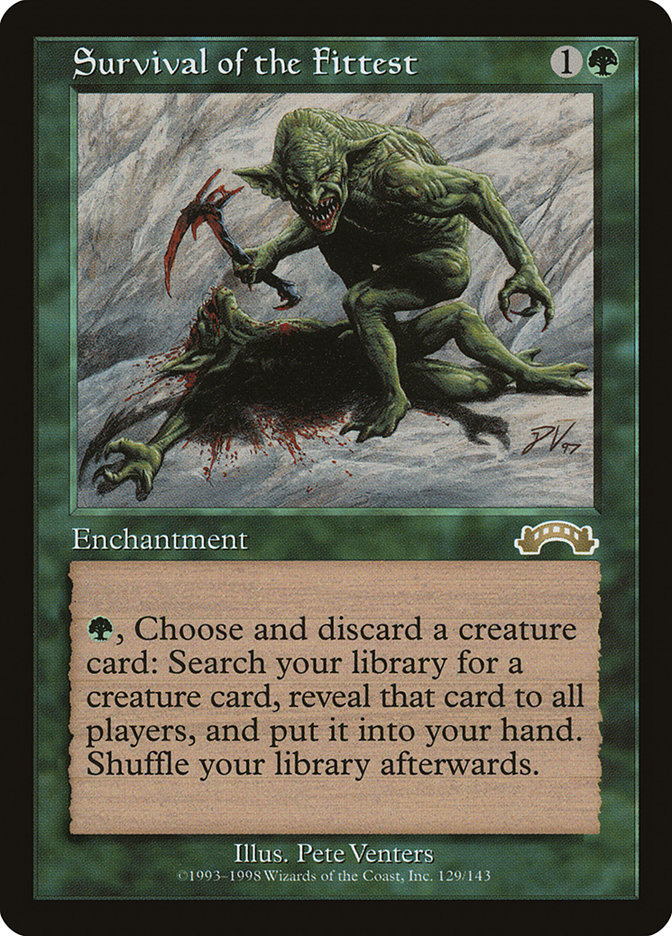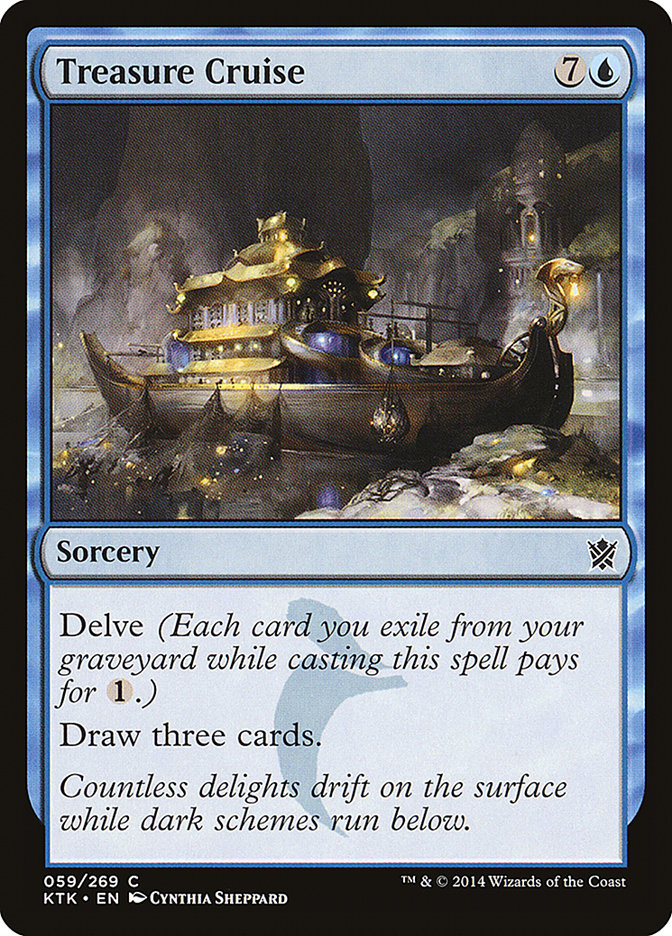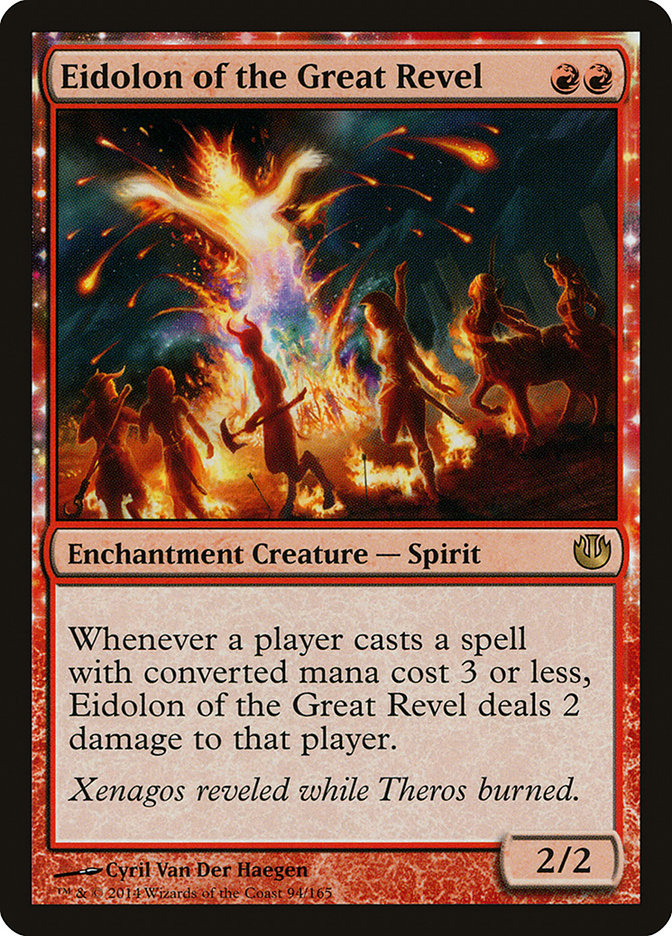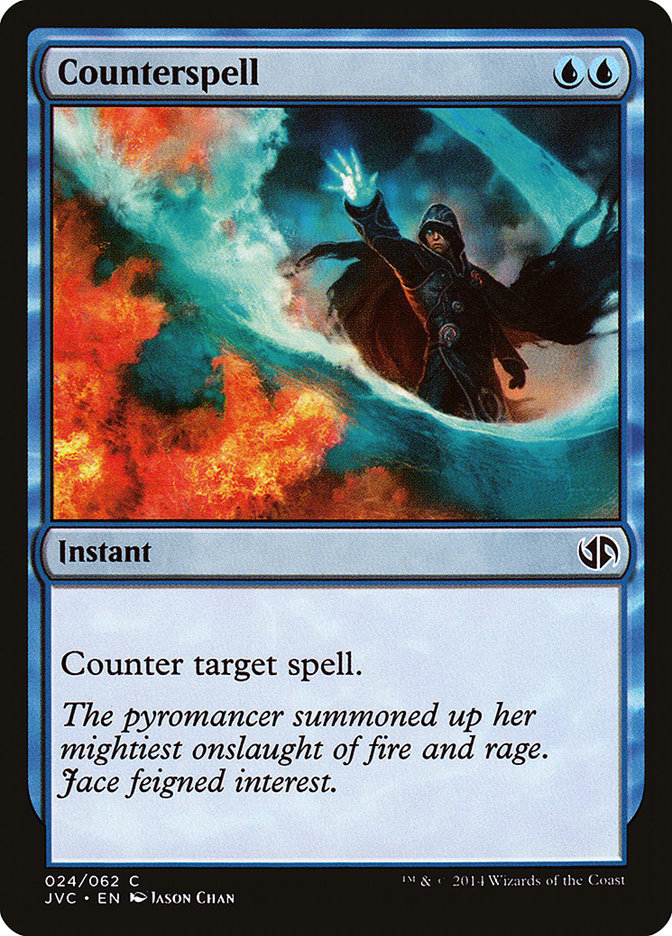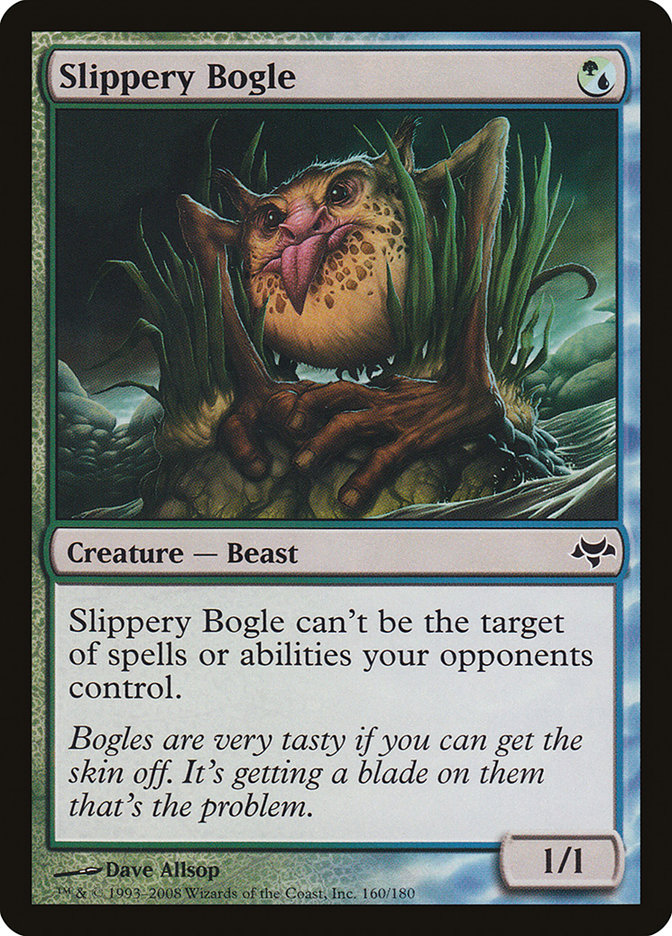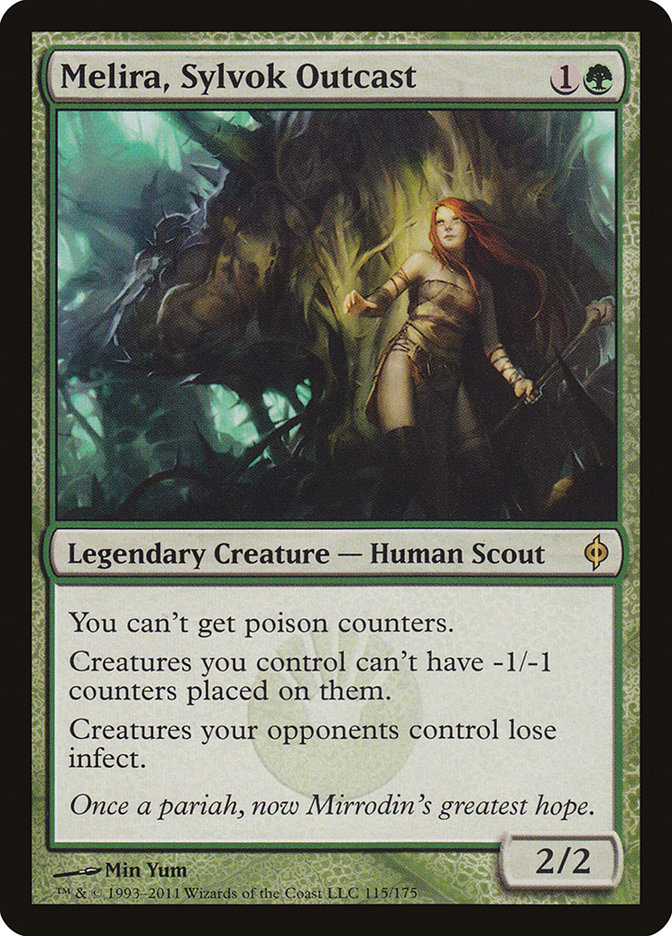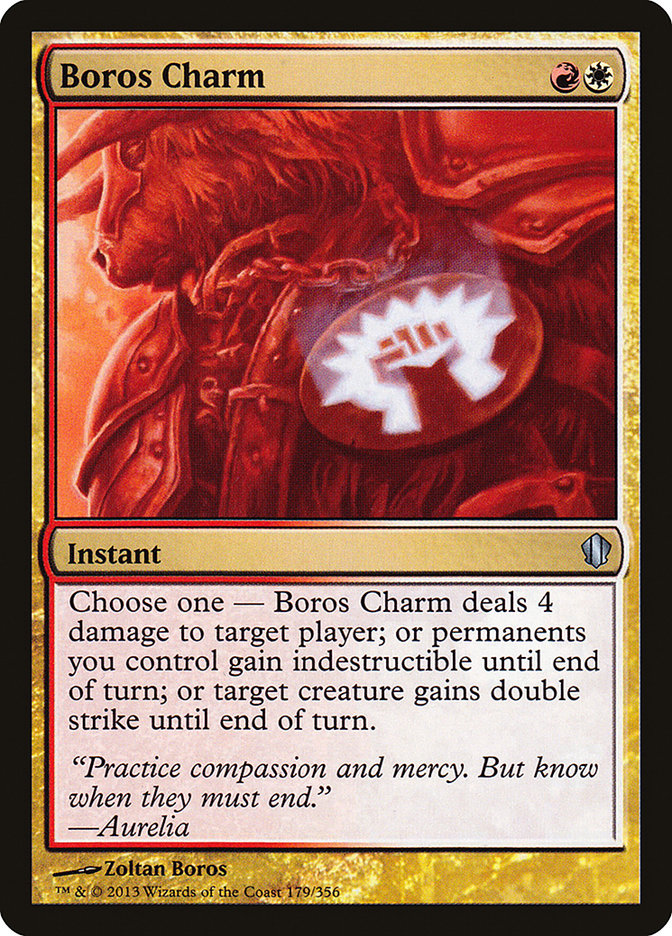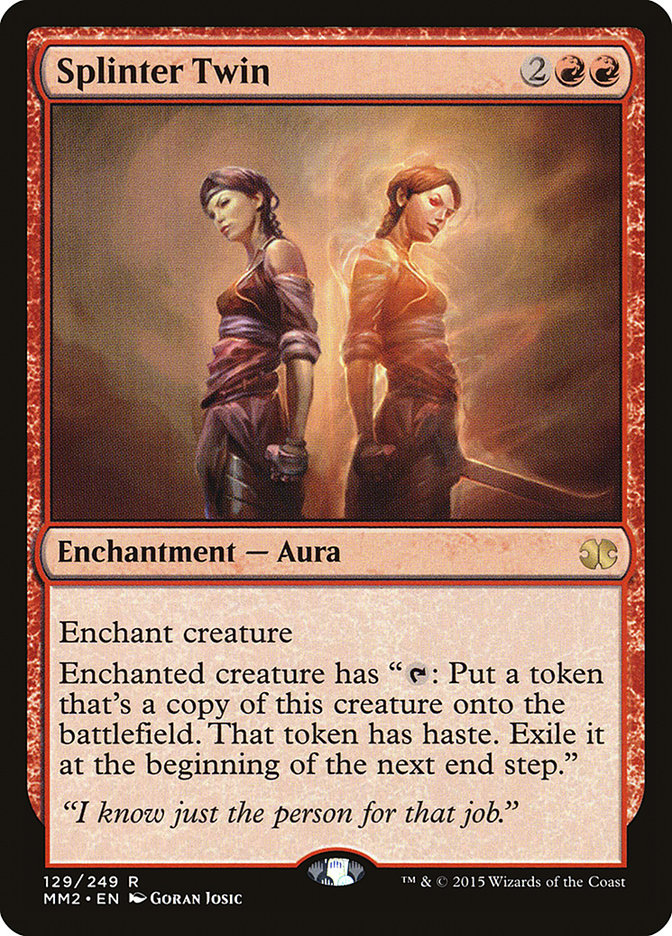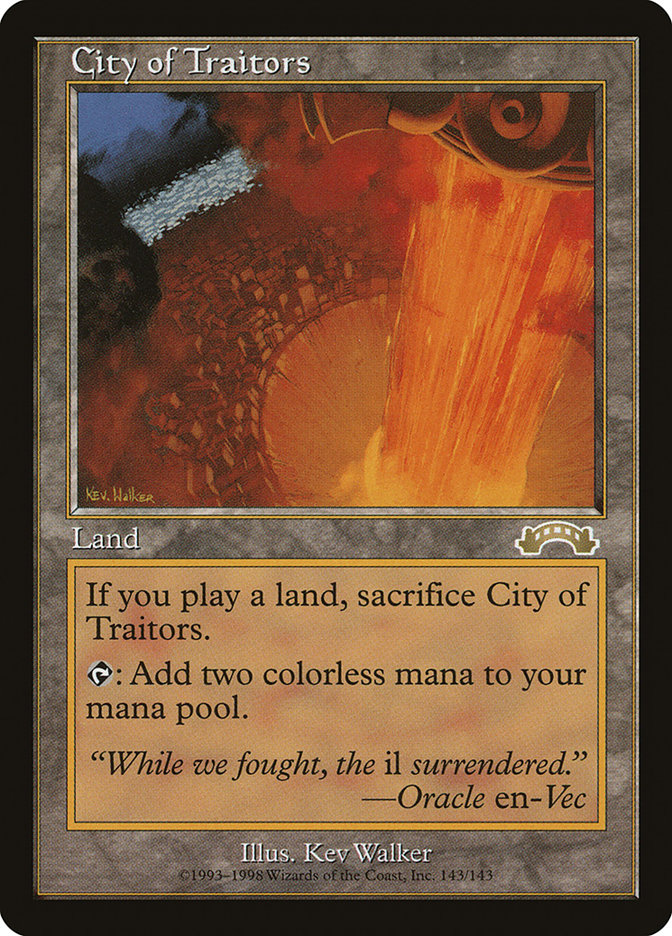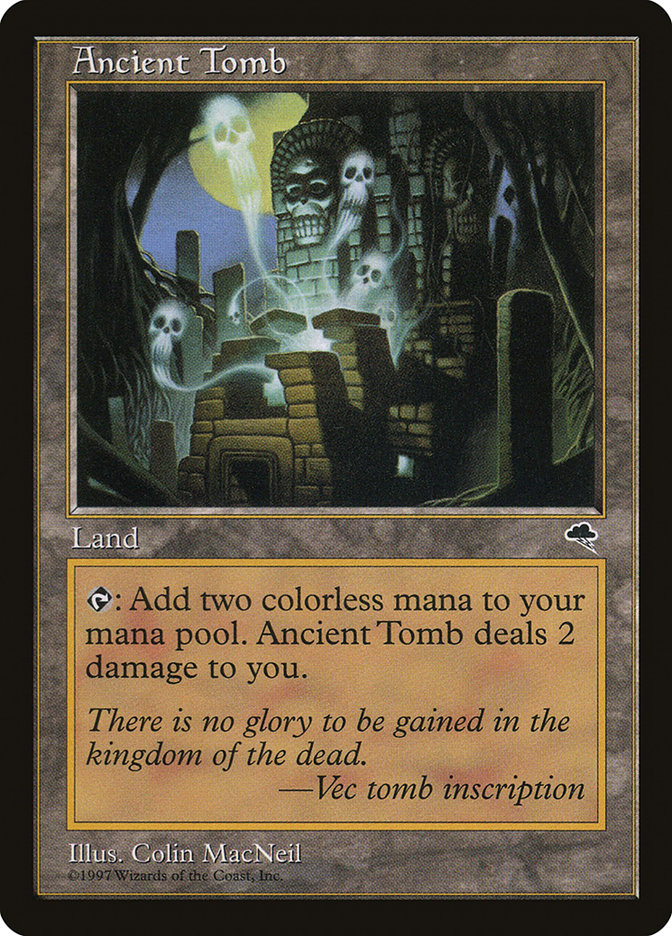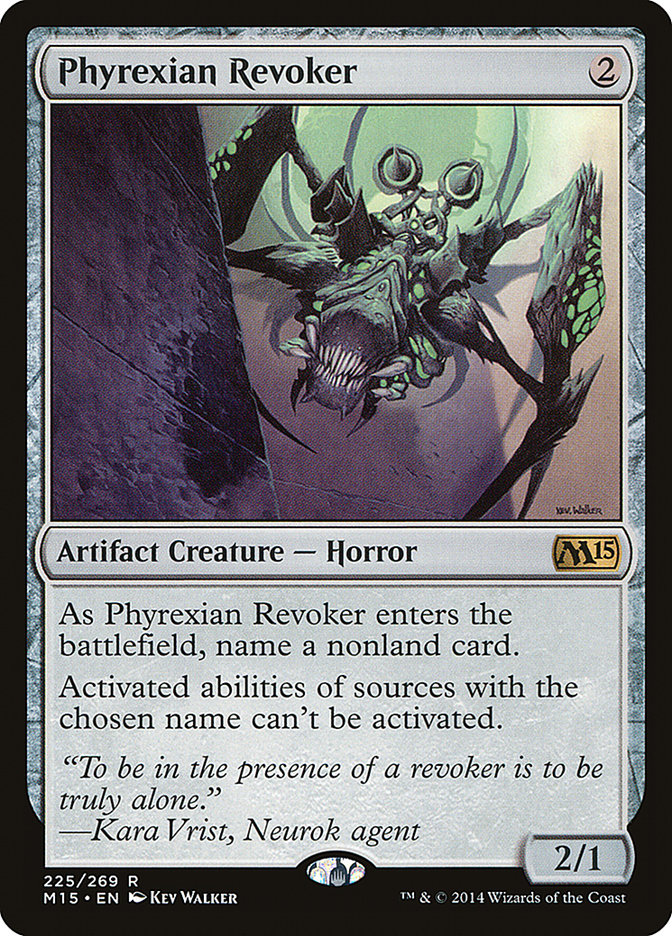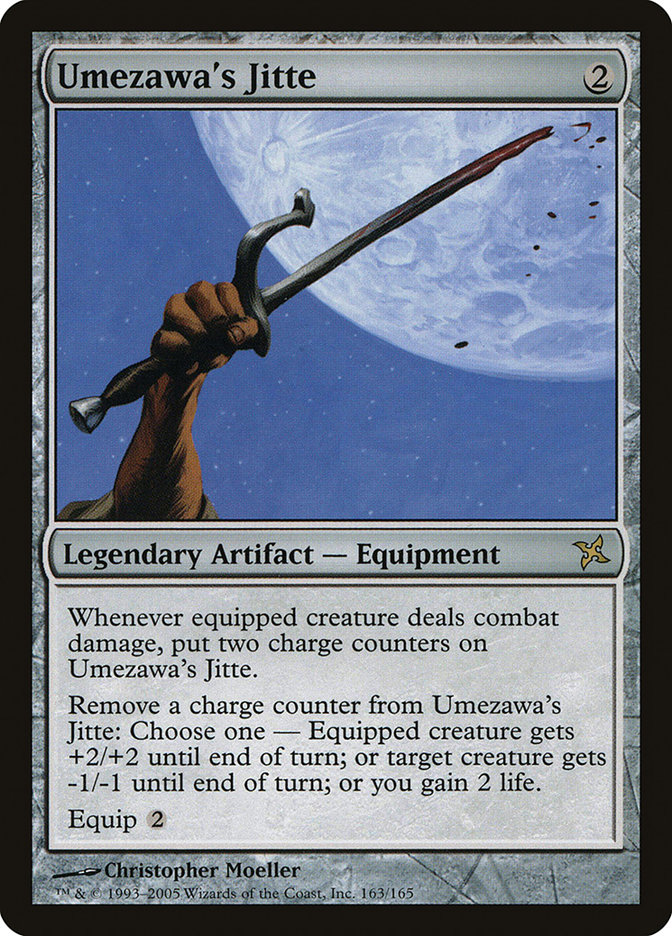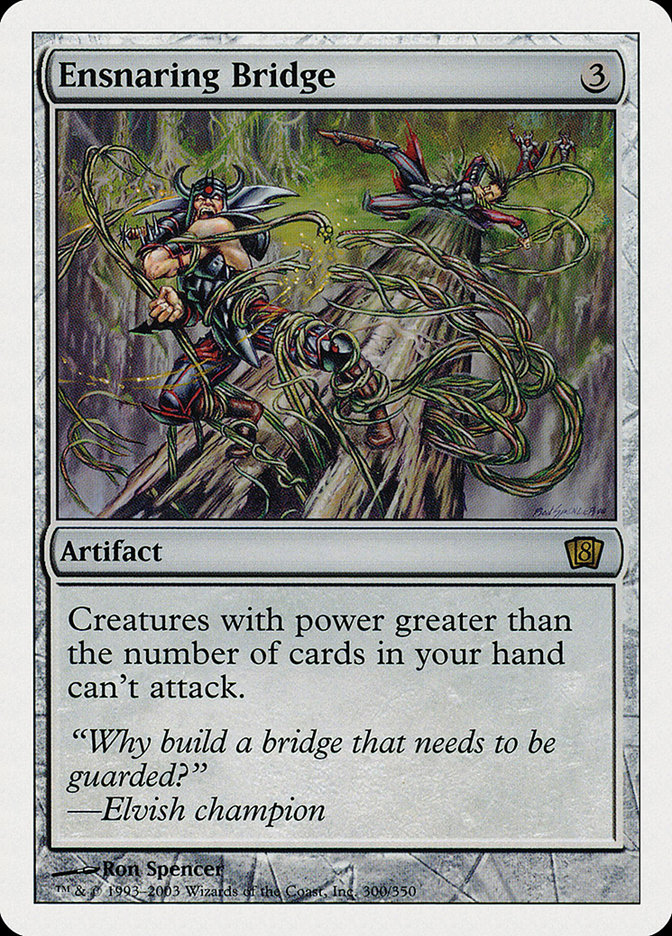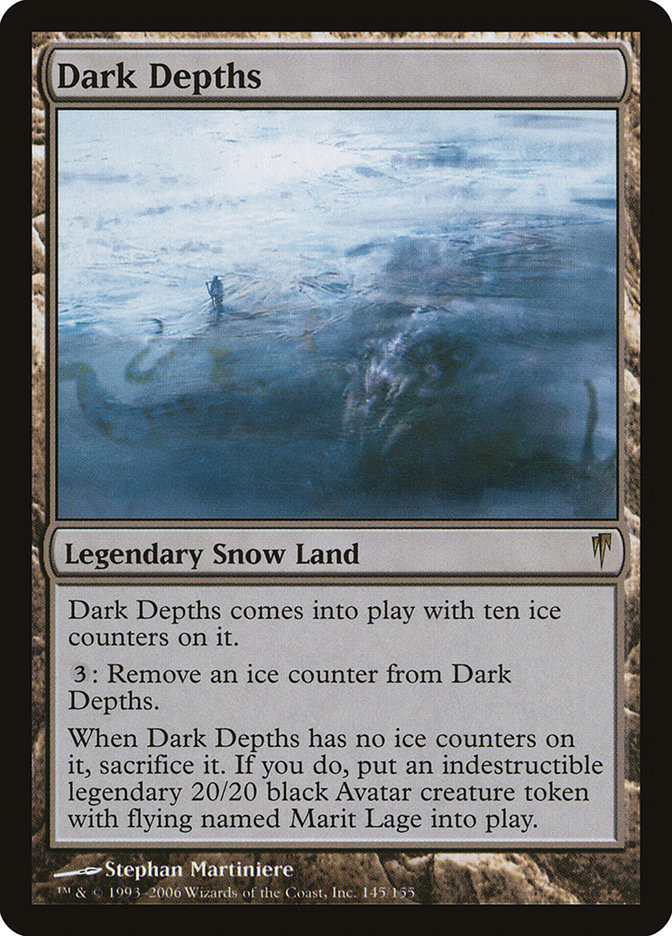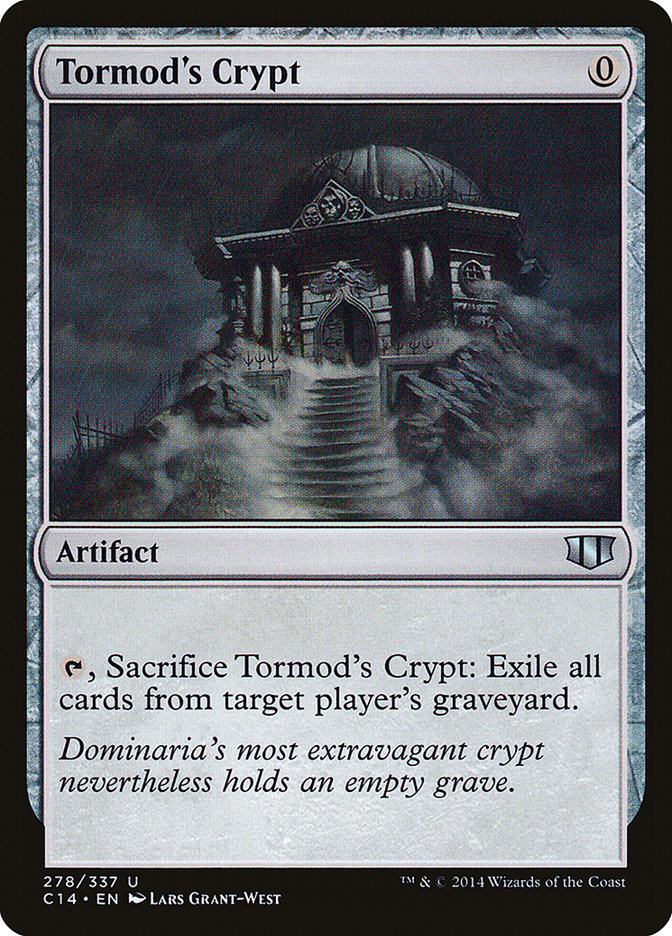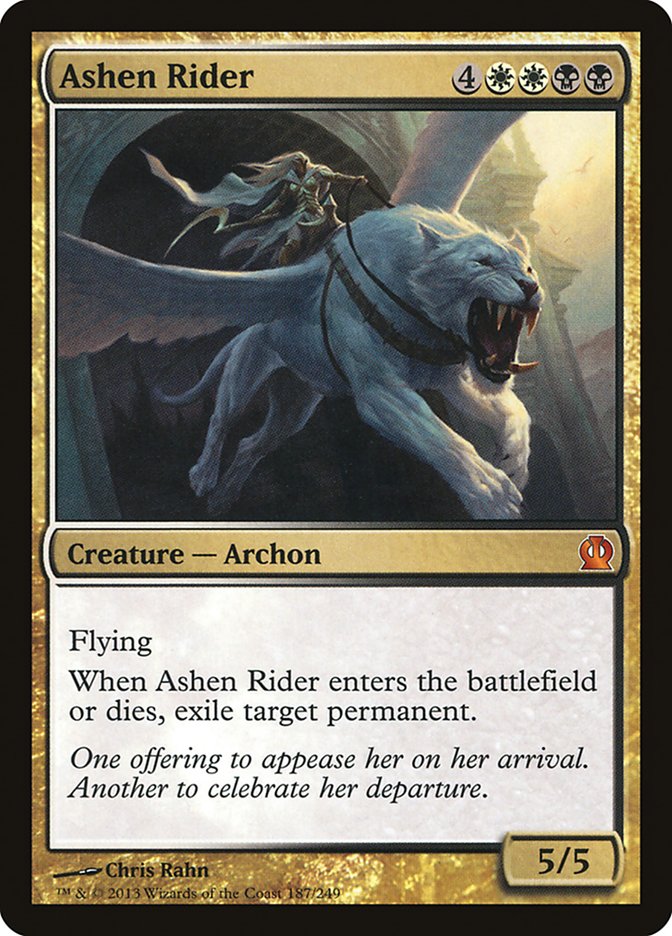 Survival of the Fittest in Legacy leading up to its eventual banning. There was a combo Survival deck, a control Survival deck, and an aggro Survival deck. We’ve seen this kind of thing before. So what do we do?
Survival of the Fittest in Legacy leading up to its eventual banning. There was a combo Survival deck, a control Survival deck, and an aggro Survival deck. We’ve seen this kind of thing before. So what do we do?
I’ve seen a lot of people calling for emergency banning, since it is clear that the Eldrazi engine is too powerful for Modern. But what people don’t understand is that emergency banning a card, or multiple cards, from a deck that just emerged is setting a bad precedent for the future of Magic.
The first reason is that people need to know that the cards they just bought after the Pro Tour won’t immediately become unplayable. At the very least, you have a few months to play with your new, shiny toys before the big, bad DCI comes and takes them away. The other reason is that, even if we all “know” that the Eldrazi engine is too strong for Modern, we’ve only had two tournaments to see exactly how people respond.
Fast mana has broken the game before, and it will break the game again. When Eye of Ugin was first released, there were zero Eldrazi creatures for it to interact with. At the time, I’m sure that the folks at WotC thought that most (if not all) colorless Eldrazi were going to be big, stupid, expensive monsters, and making them cost a little less wasn’t a big deal. But cards like Eye of Ugin will generally get better over time, because cards will be printed that interact with it in various ways that we can’t always foresee.
The truth of the matter is that there just isn’t enough time before making a new set to see just how each card will interact with every other card ever printed. Testing for older formats like Modern or Legacy is incredibly difficult. Before this last Pro Tour, no one on our testing team was able to come up with a great version of Eldrazi. We looked at the deck all wrong, trying to make it function like a Jund deck with a bunch of discard spells to complement Thought-Knot Seer.
In the end, the deck was set aside because it didn’t quite do what we wanted it to do, and I think that could easily happen to R&D when testing cards out for a new format. Modern and Legacy aren’t the priority, because those formats are generally big enough to contain anything that would be a bit too menacing. Sometimes, mistakes happen. It just sucks that it happened pretty soon after Dig Through Time and Treasure Cruise.
Moving forward, you should know that it is very likely that something from the deck gets banned. My vote is Eye of Ugin, since it breaks more inherent rules in Magic, and also because it has been an eyesore in G/R Tron for so long. A ramp deck should not be able to win the long game against a control deck while also tutoring up win conditions.
But Eldrazi isn’t the real problem of Modern. In actuality, Eldrazi just puts a spotlight on what is actually going on. Before they banned Summer Bloom and Splinter Twin, there were two decks in Modern (if not more) that could win the game on turn 2 without much trouble. Why only one of them got the banhammer is beyond me. But at its core, Modern is not really an interactive format. And maybe that’s why people love it. Why do you think so many people hate decks with discard spells? Counterspells? Why do you think so many new-to-Modern players gravitate toward Eidolon of the Great Revel?
Interaction, or a lack thereof, determines just how good or bad a format is. And with such a densely populated card pool as Modern has, there is a lot of wiggle room in deck selection. A diverse metagame is fine and all, but not when every archetype is of equal power level and incredibly restrictive on what kinds of cards can interact with it.
Why do you think people put Splinter Twin into most U/R/X Control decks? Because when a format is as wide open as Modern, with so many powerful potential strategies, they needed a way to close games against stuff like G/W Hexproof, Abzan Company, Burn, and a host of other off-the-wall decks that can’t be beaten in a fair fight.
In a lot of ways, winning in Modern is about deck selection more than any other aspect. Some of the decisions you make in a game will matter, and the same goes for mulligans, sideboarding, and card selection before the tournament. But when it all comes down to the wire, what deck you’re playing will matter the most, which is the main problem with Modern as a format.
But I like Modern. I really do. I think it could be a great format, and it already has a gigantic following. But I am not okay with the current rules and goals that WotC has set in place. Banning Splinter Twin was a mistake. Not only was it a combo deck that didn’t kill until turn 4, which has been established as fine, but both pieces of the combo could be interacted with. A creature-based combo deck that allows for a lot of gameplay on both sides was perfectly fine, and I think the main reason it was banned was because they didn’t want it to win another Pro Tour. I get that sentiment, but I doubt any Splinter Twin decks would have been able to keep up with Eldrazi, anyway.
Splinter Twin, like Jund and Abzan, was one of the few decks in Modern that actually tried to interact with the opponent’s deck. Remand, removal spells, and some versions (like mine) also played Tarmogoyf and the like to initiate creature combat. The creatures Pestermite and Deceiver Exarch allowed for some tricky stuff when tapping lands or creatures, and I’m not even sure anyone wanted Splinter Twin to be banned.
The combo was annoying at times, but from my experience, people have “gotten over” that aspect of it. The dance of trying to assemble the combo amidst discard spells, removal, and other forms of disruption was some of the most fun I’ve ever had playing Magic. And in actuality, assembling the combo was pretty rare, outside of doing it against other dedicated combo decks.
Where the format lies now is a dark place. I agree that there should be no emergency banning, because Shadows over Innistrad will be out soon enough, and some part of the deck will face extinction. I don’t think too many people will “quit playing Modern” in the next six weeks, because the truth is that there are a ton of decks that are still viable, even if the spotlight shines brightly on Thought-Knot Seer.
Eldrazi in Legacy
The true degenerate format, Legacy, has had some of the tentacled monsters crop up here and there, and I’m not talking about Crush of Tentacles. The Modern Menace has ported quite easily into Legacy, all thanks to these two lands.
Alongside both Eye of Ugin and Eldrazi Temple, there are some truly gross starts to the deck featuring the Cthulhu-lite squad of Thought-Knot Seer and Reality Smasher. There has been a bit of talk over the interwebs about Eldrazi in Legacy, as it took down a $1K tournament this past weekend.
That list might have been a rough draft, but the deck seems to mostly build itself. Chalice of the Void is infinitely better in Legacy than in Modern, and you don’t even need Simian Spirit Guide to cast it on turn 1. At the moment, most people are trying out Thorn of Amethyst or Trinisphere alongside Chalice of the Void to slow people down or entirely invalidate their gameplan. I’m not sure this route is correct, or even necessary in the maindeck.
Much like the variations of Eldrazi in Modern, the Colorless Eldrazi deck gets beaten up pretty badly by stuff like Death and Taxes or any deck that can work around Chalice of the Void without issue. Colorless Eldrazi shines against most Brainstorm strategies but will have a bit of trouble if the opponent can go over the top without much trouble. Decks like Storm and Infect need to end the game before your bigger spells start coming online or they get locked out by one of the annoying artifacts.
After sideboard, things might change significantly, as they will likely have access to ways to deal with Chalice of the Void (that don’t cost one mana), so you need to make sure you have a plan to fight back in these spots. You want mostly free spells or hard-hitting sideboard options that don’t cost one mana, so as to avoid your own Chalice of the Void.
I’m still not sold that four copies of City of Traitors is right, as you rarely want to play it on the first turn in this deck. The Eldrazi thrive on being able to use the extra mana garnered from these lands over the course of the game, so I feel like the right number of City of Traitors is likely two. It is probably the best second or third land you can play and it can help cast Chalice of the Void on the first turn, but it is a bit awkward outside of these two scenarios.
Here’s what I would play this weekend at #SCGPHILLY.
Creatures (22)
Lands (26)
Spells (12)
Sideboard

In a Nutshell
This is not a combo deck. It is not a prison deck. Much like the Colorless Eldrazi deck in Modern, this is a beatdown deck. We’re trying to kill the opponent as quickly as possible, and we don’t really have time to mess around with a ton of maindeck disruption. Chalice of the Void and Thought-Knot Seer need to be enough to fight combo in the first game, since your clock is blisteringly fast. If they are faster than you and can fight through that disruption, then you can’t help it.
We have to rely on the sideboard to give us some help so that our maindeck isn’t flooded with mediocre cards like Phyrexian Revoker, Thorn of Amethyst, or Trinisphere. We aren’t locking people out with these cards. We are simply slowing them down. And instead of that, we just leverage our cheap, gigantic threats in a similar way, while being proactive.
We have the ability to go a bit bigger than most other aggressive decks in the format. Cards like Reality Smasher and Endbringer tower over Tarmogoyf and are fairly tough to get off the table. You can blank their best cards with Chalice of the Void and slow them down significantly with Dismember or Warping Wail.
Umezawa’s Jitte may seem a strange inclusion in the maindeck, but it helps against the non-combo decks in the format. Your creatures will occasionally have a tough time getting through a bunch of chump blockers, but Umezawa’s Jitte also provides you with a powerful way to clear utility creatures from the battlefield. Elves, Stoneforge Mystic, Baleful Strix, and even threats like Vendilion Clique can be tough to beat, but Jitte solves those problems almost singlehandedly. Jitte also allows you to race any other creature-based deck with ease by putting on more pressure, keeping their battlefield clean, or gaining some life in a pinch.
The Bad News
Much like Colorless Eldrazi in Modern, Legacy doesn’t give us too many ways to beat the problematic permanents that could come our way. Ensnaring Bridge is still a nightmare, but Legacy offers many other options to punish a deck like Colorless Eldrazi.
Creature-based decks that can ignore Chalice of the Void and present threats bigger than Reality Smasher (like Knight of the Reliquary) could also be an issue. Having access to a color could be nice, but that would require changing the deck in a significant way. I think Dismember and Warping Wail should do a lot to keep their early creatures in check, and all you need to do in the late-game is find a few big creatures to punch through.
The Lands matchup is also pretty bad. We need our mana to function, and most of it, so a strategy that recurs Wastelands while building up resources is pretty tough to beat. Maze of Ith is also very annoying, and even worse in multiples. We also have very few ways of keeping Dark Depths in check.
The Good News
This deck can beat any other deck in the format, given the right build and the right draws. We haven’t had any major Legacy events since Oath of the Gatewatch was released, and much of the information on how to build this archetype is coming from Modern. Over time, it will only get better, though the hate cards for it will start coming out of the woodwork, but that’s an entirely different story.
There are a lot of ways you can build this archetype because there is no rule stating you have to play colorless-only. The manabases people are putting together favor the colorless approach at the moment, but they also favored it in Modern as well. As we figure out what we need to beat, and how we can change the deck to beat it, Eldrazi will evolve just like any other archetype in Legacy.
I don’t think it will be one of the most dominant decks in Legacy, nor do I think it is too powerful to exist. After all, there are a host of first-turn kills available in Legacy, and they aren’t all that tough to assemble. Of course, I could be very wrong, but I think Legacy has the necessary tools to keep decks like Eldrazi in check. After all, Affinity is much more powerful in Legacy than Modern, and sees very little play.
One thing I love about this deck is that it ports so easily from Modern into Legacy. Even if something gets banned in Modern, your cards won’t lose a significant amount of value, and you’ll be able to keep playing it in Legacy for a while. The manabase can be a little expensive, but it is highly customizable. I’m not even sure if Wasteland belongs in the deck!
A Powerful Sideboard
Legacy is a tough format to build a sideboard for. Some decks have Brainstorm, so you’re able to be a bit more flexible. You’ll see more cards with Ponder and the like, so you can play more singletons. But Colorless Eldrazi is not exactly on the same path.
We can’t sideboard out very many cards each game because our deck is linear and our plan needs to remain the same each game: beatdown, mild disruption, a bit of removal. The beatdown part can’t be changed, but we can add in more disruption or more removal if we need to. In any case, we shouldn’t be taking out more than four to six cards per matchup.
This means our sideboard cards also need to be linear and incredibly powerful. Tormod’s Crypt is a fine card to help out against Reanimator, Dredge, or other all-in graveyard decks. It is pretty terrible at stopping stuff like Life from the Loam, Punishing Fire, or other cards that only interact with the graveyard for a short period of time. Leyline of the Void shuts down all of this while being immune to Abrupt Decay.
Tormod’s Crypt is also much stronger when you can play something like Ponder to find it on the first turn and cast it before too much damage has been done. But in this deck, we don’t have that luxury and will often need to mulligan in order to find it. If we’re doing that, then I’d rather just lock them out with a much more powerful effect.
Ashen Rider might look strange, but it is one of your best weapons for beating Show and Tell. Alongside Phyrexian Revoker to shut down Sneak Attack and a fast clock, you should be able to take them out before they really get anything online. Warping Wail also does double duty for countering Show and Tell.
Many Reanimator strategies also play Show and Tell out of the sideboard, and the combo of Ashen Rider plus Leyline of the Void (and Warping Wail) should lock them out of the game. The best way to build this sideboard is to figure out your main vulnerabilities and attack them with everything you’ve got. In all honesty, I wouldn’t be surprised if we don’t sideboard more than a card or two in a significant number of matchups. The deck does what it does, and there isn’t a lot that the sideboard can do to change the major plans of attack.
Let’s Get ‘Em!
This weekend will feature the first major Legacy tournament with Oath of the Gatewatch, and I’m excited to see just what will shake out of it. I have a feeling that many of the creatures and random permanents that give Eldrazi trouble will be out in full force. I mean, how does this deck beat True-Name Nemesis?
I really want Colorless Eldrazi to do well, but I don’t want it to dominate the event, as the Eldrazi ruining another format would be pretty bad for the game. It might be the “hot new deck” this weekend at #SCGPHILLY, but I’m reasonably confident that it won’t take up more than one or two slots in the Top 8. I expect that most people will just stick to their guns, and maybe bring a few extra cards to keep it in check.
But don’t think you can sleep on this deck and just dodge it. I think many of the better players at the event will want to try out the hot new thing, and having a lot of strong pilots playing a powerful, proactive deck could spell disaster yet again.
Be the Gatewatch. Push the Eldrazi back into the fold between realities from which they’ve come. Do you really want them to take over Legacy, too? I Thought-Knot.

